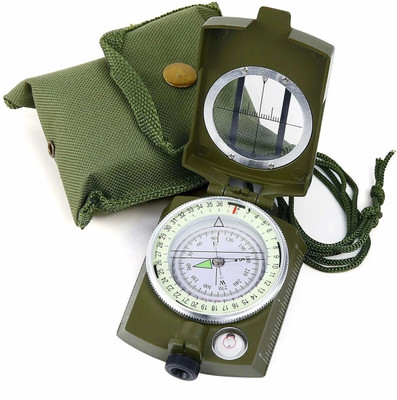JSI MILITARY LENSATIC PRISMATIC COMPASS Compass(Green)
Quick Overview
Product Price Comparison
A lensatic compass is often referred to as a military compass, and is typically used by the U.S. Military. The lensatic compass is comprised of different parts compared to a baseplate compass. The term ŌĆ£lensaticŌĆØ comes from the fact that there is a lens on the rear side of the compass that aids in the orienteering process. Lensatic compasses are made up of three parts: cover, base, and reading lens. The cover is used to protect the compass and also incorporates the sighting wireŌĆöwhich helps you determine direction. The base is the compass dial, bezel, and the thumb loopŌĆöthe thumb loop is used for stability to garner a more accurate reading. Lastly, the reading lens also helps cover the compass and folds out; this is where the term ŌĆ£lensaticŌĆØ comes from.It has three main parts: lens, cover, and base. Lens: The rear sight slot is found on the lens where you can read the dial. It can also be used to lock the compass with the cover and keep it secured. Cover: The cover holds the sighting wire as well as the luminous sighting dots necessary when navigating at night. It is commonly used in land surveys. The simplicity of the prismatic compass makes it applicable in preliminary surveying, road surveying, rough traversing etc where high accuracy is not required. It is used to find out angles between the bearings of a line.It contains a prism which is used for accurate measurement of readings. The greatest advantage of this compass is both sighting and reading can be done simultaneously without changing the position. Prismatic or lensatic compasses are used for lining up with an object whose bearing is to be determined. A prismatic compass has a glass prism or a lens and a lid with a hairline. This type of compass often has a magnifying lens for map reading, some sort of light for low light conditions, and a ruler.


